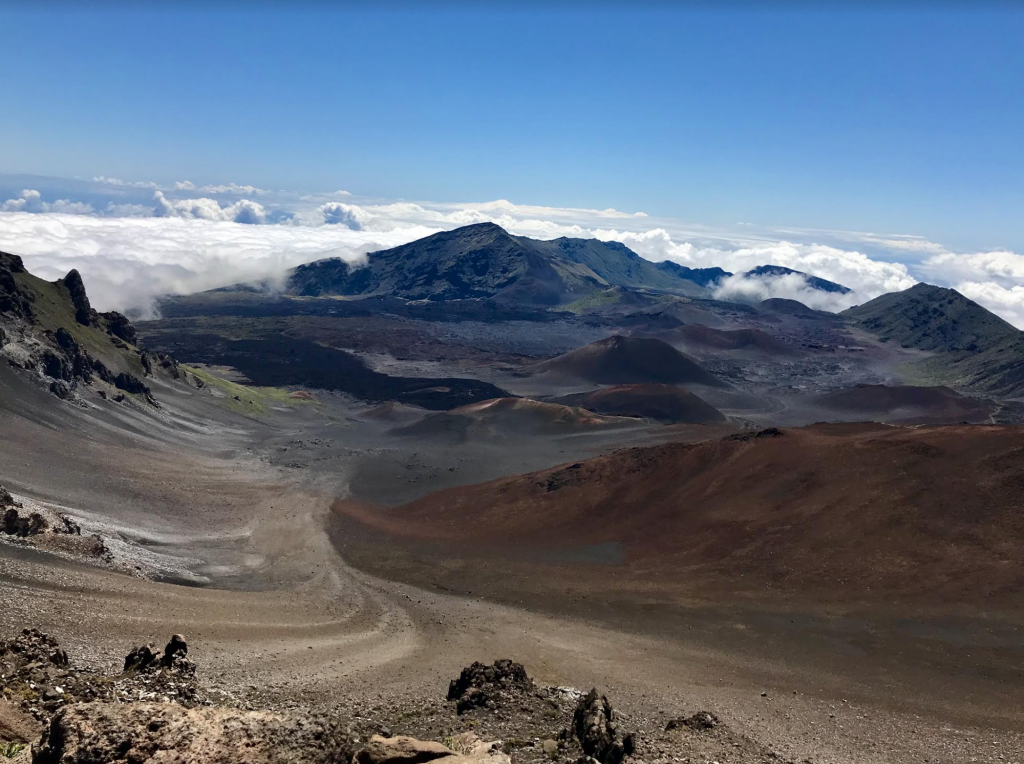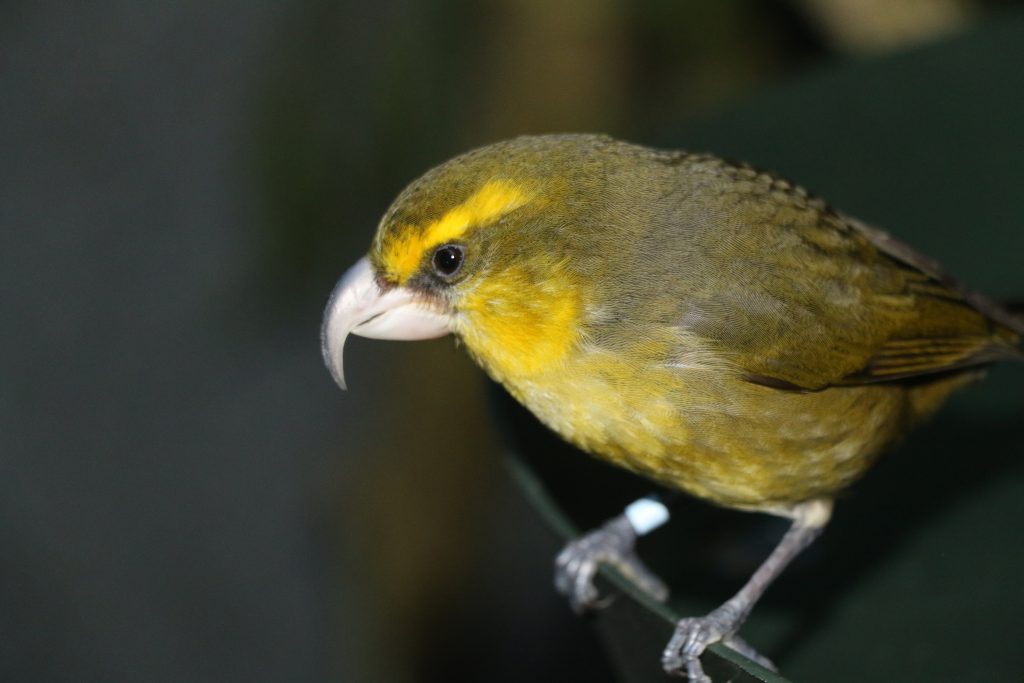US House Committee Advances Measure to Expand Haleakalā National Park, Recover Endangered Birds
Congressman Ed Case (HI-01) announced the US House Appropriations Committee approved of two more of 12 total bills to fund the federal government for upcoming Fiscal Year (FY) 2022 (beginning Oct. 1, 2021), these targeting agriculture and conservation.
The first, the FY 2022 Interior, Environment and Related Agencies Appropriations bill, proposes to fund $43.4 billion for various environmental related programs and agencies. The second would provide $26.6 billion for the FY 2022 Agriculture, Rural Development, Food and Drug Administration and Related Agencies Appropriations bill.
Interior, Environment and Related Agencies

“The Interior bill would provide funding to expand our national parks and conserve our ‘āina for generations to come,” said Case. “It would specifically fund a major expansion to Haleakalā National Park, which the National Parks Service will steward while maintaining community access to the land.”
The Interior measure would allocate over $63 million from the Land and Water Conservation Fund for the National Parks Service to acquire crucial land parcels across the country. Approximately $6.1 million from this fund would aid in the acquisition of 3,019 acres adjacent to Haleakalā National Park.
“My Appropriations Committee also provided funding to help recover our endangered bird species in the islands such as the kiwikiu, or Maui parrotbill, as the bird fights to survive in the face of rising cases of avian malaria,” said Case.

The Committee also approved Case’s request for Community Project Funding of $300,000 for the City and County of Honolulu to develop its city-wide Tree Inventory and Management Plan.
O‘ahu’s trees, especially in the highly dense urban center, besides lending beauty to our Honolulu, are environmental workhorses and essential components of both climate change adaptation and mitigation.
“According to the City and County of Honolulu, for each dollar spent on tree planting and care, Honolulu’s trees provide $3 in benefits,” said Case. “Recent assessments have determined that O‘ahu has lost nearly 5 percent of its total tree canopy over the study area in just four years.”
These CPF funds would allow Honolulu to develop a complete inventory of its tree assets, which is essential for determining the number of publicly owned trees, planning for new trees and tracking their maintenance needs.
Analyzing a complete inventory against social vulnerability and other demographic and environmental data can identify potential disparities in city tree assets across communities and work towards equitable distribution of resources.
“CPF requests are submitted by individual Members and are for specific projects and purposes in our respective districts,” explained Case. “CPF requests are only for state and local governments or non-profits organizations. These projects must have demonstrated community support, must be fully disclosed, and they are subject to audit by the independent Government Accountability Office.”
“The Committee’s Interior bills further makes critical investments in environmental protection and land conservation, clean air and water to protect our communities’ health, earthquake and volcano warning systems,” said Case. “There is also funding to protect our public lands and endangered species, support our Native Hawaiian communities, assist with climate change mitigation, and help our state government with the costs of programs benefiting our Compacts of Free Association residents.”
Programs and provisions requested and secured by Case in the Interior bill include:
- $452 million for National Park Service land acquisitions and State Assistance Grants, which includes $6.125 million for Haleakalā National Park.
- Language instructing the Office of Native Hawaiian Relations to expand the federal governments Native Hawaiian community consultation efforts.
- $4 million for the U.S. Fish and Wildlife Service’s State of the Birds. These funds support efforts to recover our most endangered Hawaiian forest bird species.
- $33.5 million, a $3.3 million increase, for the U.S. Geological Survey Volcano Hazards Program. This includes funding for the Hawaiian Volcano Observatory, which monitors the active volcanoes in Hawai‘i, assesses their hazards, issues warnings and advances scientific understanding to reduce impacts of volcanic eruptions.
- $1.8 million for the National Park Service American Indian and Native Hawaiian Art and Culture Grants program.
- $57.7 million for State Historic Preservation Offices.
The measure also includes:
- $1.1 billion for the Drinking Water State Revolving Fund, which provides funding to Hawaii’s regulated water systems for the construction of drinking water infrastructure projects,
- $44.0 million for the US Geological Survey Biological Threats and Invasive Species Research Program, and
- $16.9 million for the National Trails System, which will benefit the Ala Kahakai National Historic Trail.
Case said, “The critical work of the Hawaiian Volcano Observatory cannot be overstated given the destructive impacts of both lava flows and the emission of sulfur dioxide in the wake of eruptions as recently as last December,”said Case.
Agriculture, Rural Development, Food and Drug Administration and Related Agencies
“As we continue to emerge from the devastating impact of COVID-19, we must work to strengthen Hawaii’s agricultural sector, which has been a major driver of our local economy,” said Case.
Case recently testified personally before the House Agriculture Committee, on which he previously served, on the often unique challenges facing Hawai’i agriculture.
“I talked story most recently with our farmers at the Farmers Market in Mililani. That reinforced especially what a critical lifeline small farms and these markets have played in helping to feed families during the pandemic,” said Case.
“Rural development is also critical, and most important here is ensuring broadband connectivity which, as we’ve also seen in COVID-19, is essential to effective tele-health, remote learning and working from home, especially for those students who were unable to attend schools shut down during the height of COVID-19.”
Programs and provisions requested and secured by Case in the Agriculture bill include:
- $33.9 million for the Agricultural Quarantine Inspections of invasive species in Hawai‘i.
- $10 million for the Micro-Grants for Food Security program, which has provided direct farming to Hawai‘i’s subsistence and small commercial farmers.
- $3.5 million for Education Grants for Alaska Native and Native Hawaiian-Serving Institutions, the first increase for this vital program in years.
- $4.5 million for coffee research to address the threats of Coffee Leaf Rust and Coffee Berry Borer on our iconic coffee industry.
- $7.4 million for Farmers Market and Local Food Promotion Program, which helps address food insecurity with fresh produce and supports local farms.
- $1.2 million for research for the macadamia felted coccid.
The measure also:
- Directs the US Department of Agriculture to update its Biosecurity Plan for Invasive Ants in the Pacific to help Hawai‘i deal with Little Red Fire Ant and other invasive ant species.
- Requests the US Department of Agriculture study the ability and effectiveness of managed forestry best practices to aid in the reforestation of native trees and the cultivation of forest crops in tropical and subtropical forests.
- Emphasizes the importance tropical and subtropical crop research, given the threats posed by climate change and invasive species and diseases.
- Urges the US Department of Agriculture to responsibly and efficiently take action to increase access to broadband on entities related to Hawaiian homelands.
Case’s Appropriations Committee is responsible for allocating some $1.5 trillion in funding to federal government agencies, departments and organizations on an annual basis through twelve separate bills.










